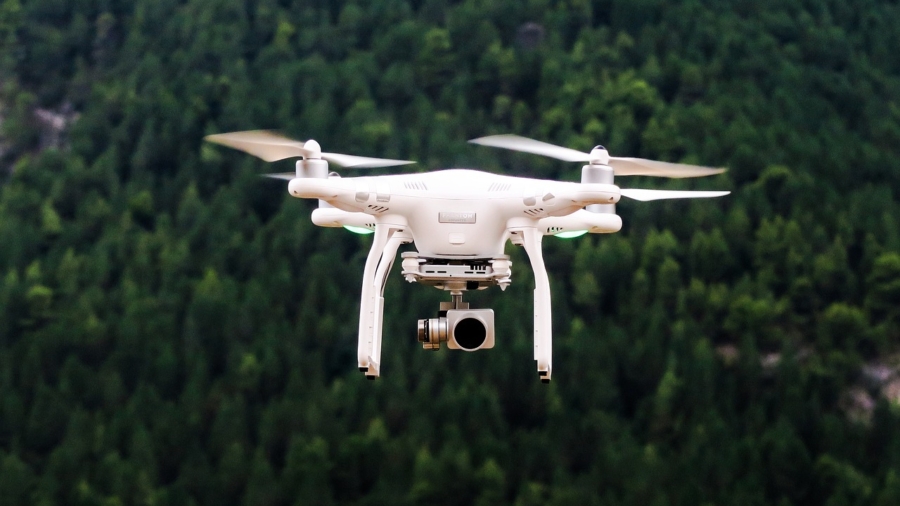Drones have revolutionized the world of photography, providing stunning aerial shots that were once only possible with expensive helicopter rentals. Whether you’re a hobbyist or a professional photographer, understanding the legal landscape and best practices for safe drone flying is crucial. This blog post will guide you through the essential legal tips and best practices to ensure your drone photography sessions are both safe and compliant with regulations.
Table of Contents
Understanding Drone Regulations
Before you take to the skies, it’s essential to familiarize yourself with the regulations governing drone use in your area. In the United States, the Federal Aviation Administration (FAA) is the primary authority overseeing drone operations. Here are some key points to consider:
Register Your Drone
If your drone weighs more than 0.55 pounds (250 grams), you must register it with the FAA. The registration process is straightforward and can be done online. You’ll receive a registration number that must be displayed on your drone.
Know Where You Can Fly
Not all airspace is open to drones. Avoid flying in restricted areas such as near airports, military bases, and national parks. The FAA’s B4UFLY mobile app provides real-time information on restricted and controlled airspace.
Follow Altitude Limits
The FAA restricts drone flights to a maximum altitude of 400 feet above ground level. This limit helps prevent conflicts with manned aircraft.
Respect Privacy Laws
Always respect privacy when flying your drone. Avoid flying over private property without permission and be mindful of capturing images or videos of individuals without their consent.
Best Practices for Safe Drone Flying
Safety should be your top priority when operating a drone. Here are some best practices to ensure a safe and successful flight:
Perform Pre-Flight Checks
Before every flight, conduct a thorough inspection of your drone. Check the battery levels, ensure the propellers are secure, and verify that the camera and gimbal are functioning correctly. Additionally, make sure the firmware is up-to-date.
Plan Your Flight
Planning is crucial for a successful drone flight. Identify your flight area and check the weather conditions. Windy or rainy weather can significantly impact your drone’s performance and increase the risk of accidents.
Maintain Line of Sight
Always keep your drone within your line of sight. This practice helps you maintain control of the drone and avoid obstacles such as trees, buildings, and power lines.
Avoid Crowded Areas
Flying over crowds is not only dangerous but also illegal in many places. If you need to capture aerial shots of events or populated areas, consider obtaining special permissions or using a telephoto lens to maintain a safe distance.
Be Mindful of Battery Life
Monitor your drone’s battery life closely. Most drones provide alerts when the battery is running low. Plan to land your drone well before the battery is depleted to avoid crash landings.
Use Return-to-Home (RTH) Function
Most modern drones come equipped with a Return-to-Home (RTH) function. This feature automatically brings your drone back to its takeoff point if it loses connection or the battery is critically low. Make sure to set your home point accurately before takeoff.
Enhancing Your Drone Photography Skills
Once you’ve mastered the legal aspects and safety practices, focus on improving your drone photography skills. Here are a few tips to elevate your aerial shots:
Use Manual Camera Settings
Switching from automatic to manual camera settings allows you to have more control over exposure, shutter speed, and ISO. This adjustment can significantly improve the quality of your photos, especially in challenging lighting conditions.
Experiment with Angles and Perspectives
One of the biggest advantages of drone photography is the ability to capture unique angles and perspectives. Experiment with different heights and camera angles to create dynamic and interesting compositions.
Shoot in RAW Format
Shooting in RAW format provides greater flexibility in post-processing. RAW files contain more data than JPEGs, allowing for better adjustments in exposure, white balance, and color correction.
Edit Your Photos
Post-processing is an essential part of drone photography. Use editing software like Adobe Lightroom or Photoshop to enhance your images. Adjustments in contrast, saturation, and sharpness can make a significant difference in the final result.
FAQs
What is the best drone for aerial photography?
The best drone for aerial photography depends on your needs and budget. Popular options include the DJI Phantom 4 Pro, DJI Mavic Air 2, and Autel Robotics EVO II. These drones offer excellent camera quality, stability, and user-friendly features.
Do I need a license to fly a drone for photography?
In many countries, you need a license or certification to fly a drone for commercial purposes. Even for recreational use, you may need to register your drone and follow specific regulations. Check your local aviation authority’s website for detailed information.
How high can drones fly for aerial photography?
Most consumer drones can fly up to 400 feet (120 meters) above ground level, which is the maximum altitude allowed by aviation authorities in many countries. Always check local regulations before flying.
Can I fly my drone at night for aerial photography?
Flying drones at night is generally more challenging and restricted due to visibility concerns. Some countries require special permissions or additional lighting on the drone for night flights. Ensure you understand and comply with local regulations.
How do I improve the stability of my drone shots?
To improve stability, fly in calm weather conditions, use drones with good stabilization systems, and avoid rapid movements. Automated flight modes like tripod mode can also help achieve smoother shots.
Conclusion
Drone photography offers endless creative possibilities, but it’s crucial to prioritize safety and legality. By following the regulations and best practices outlined in this guide, you can ensure that your drone flights are safe, legal, and productive. So, get out there, explore new heights, and capture stunning aerial shots that showcase the world from a unique perspective.


Add a Comment